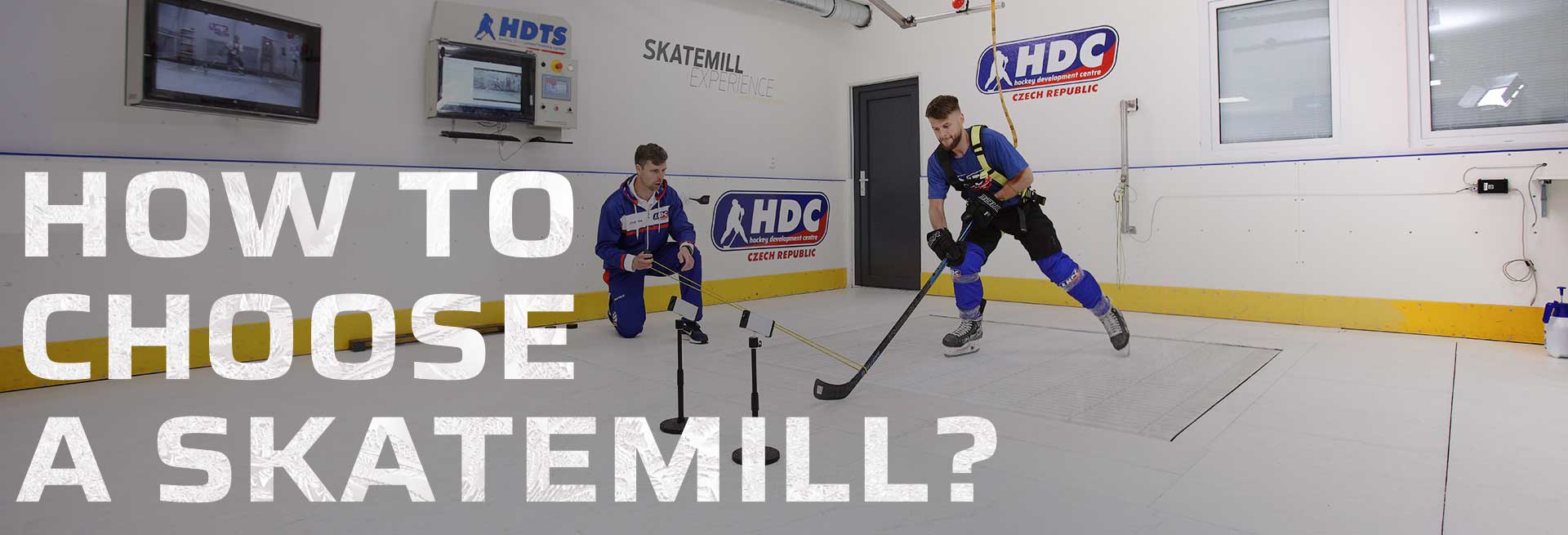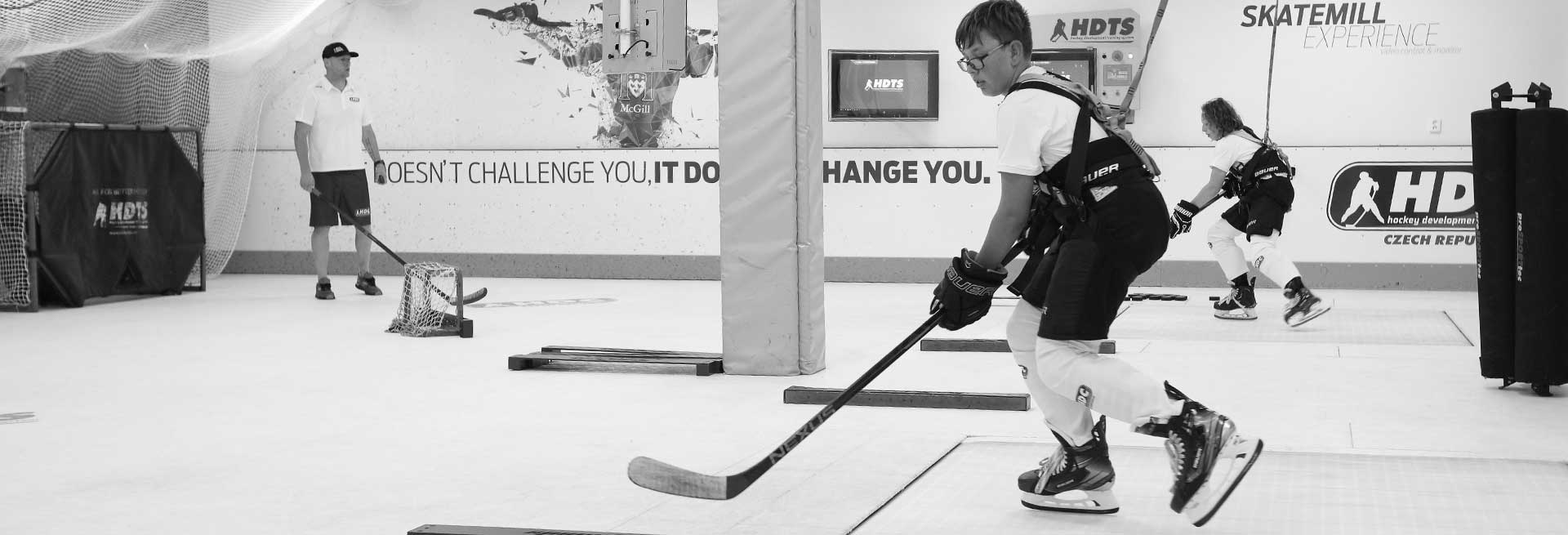
HST skatemill parameters Advantages of using a skatemill Have a questions?
The hockey skating treadmill is gradually becoming an integral part of the individual training of hockey players around the world. Many coaches include work on the skatemill also in the team training process, as well as in the setting and development of skating technique for beginner athletes. But how to choose a hockey treadmill and not miscalculate? There are many solutions on the market in a fairly wide price range and that’s when you should sharpen up.
First, you need to answer yourself the question - why am I going to buy a skatemill, what is the goal? In the vast majority of cases, the answer will be - to quickly and effectively improve players. This is a key point that you should be guided by when planning an area with a skating treadmill(s).
Once this is dealt with, let's look at the parameters of the skatemill itself. We recommend choosing a hockey treadmill by comparing the following specifications (here you can see the specifications of our professional HST A230 treadmill).


Knowing these parameters, you can make an objective choice in favor of one or another treadmill, based on technical data. But it is also necessary to understand that the combination of these parameters does not yet guarantee the achievement of the goal - the development of the player. Rather, it is only a prerequisite to achieving this goal with this device. So, you have a skating treadmill, but what to do with it in order to effectively and quickly improve the parameters of the players? Let’s consider these parameters and how to develop them on a skatemill:
Having answered these questions, we should not forget about the coaches. Does the hockey treadmill support a system of visual feedback, for a faster and clearer explanation by the coach to the player? Is there a database of categorized exercises for compiling training cycles? Are there ready-made training templates?
If you add up all of the above components, then you will get a suitable environment for the effective development and improvement of players. Thus, you will have all the necessary components to achieve your goal - the rapid individual targeted development of a hockey player on a skating treadmill. In addition, having this data on skatemills on the market will significantly narrow your choice, since many devices on the market do not meet the high requirements of modern hockey training. Although if you have any questions or need a bit of advice with choosing the right training solution - do not hesitate to ask us.